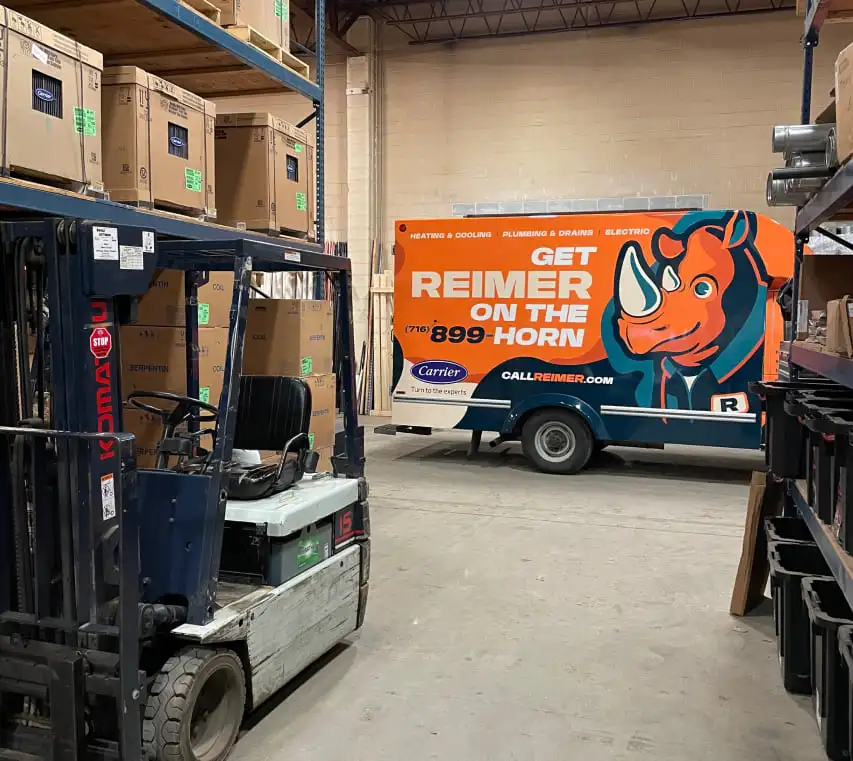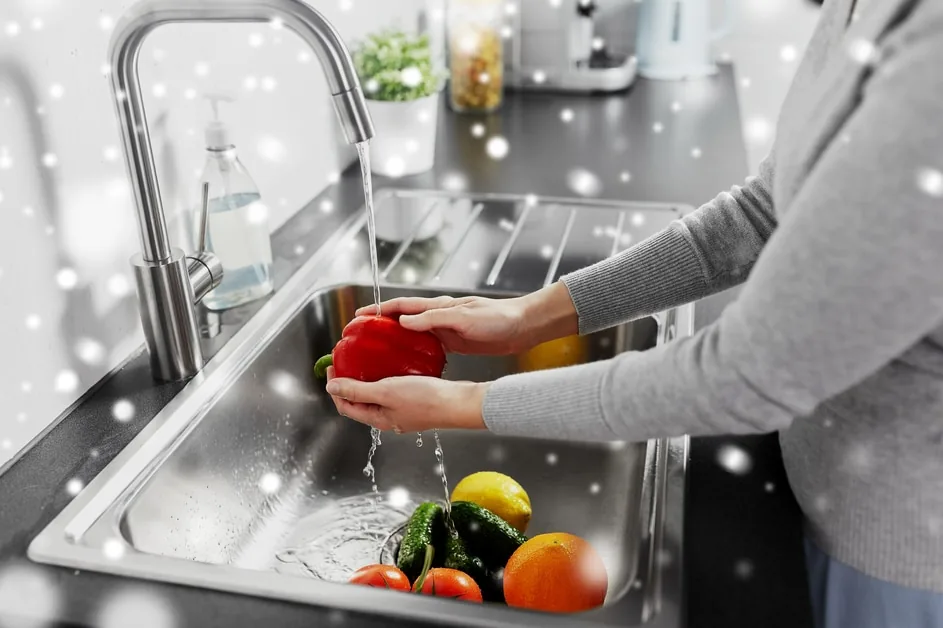Few household plumbing components prove as crucial yet frequently overlooked as the humble shut-off valve. This unassuming piece of hardware might not look like much, but it plays an absolutely vital role in every home’s water supply system. Don’t underestimate its importance until you desperately need it!
Essentially, shut-off valves provide homeowners with a simple quarter-turn solution for cutting off water flow throughout pipes and lines with ease. Whether you’re trying to stop a catastrophic leak before it spreads or just need to temporarily halt water to replace a faucet, having these shut-off points readily accessible can prove a real lifesaver.
But shut-off valves don’t just control water supply on a whole-home basis either. Many plumbing configurations also include localized shut-offs regulating flow to specific appliances and fixtures like sinks, toilets, washing machines, and dishwashers. This focused water command facilitates easier appliance swaps and leak resolutions without disrupting your entire indoor pipeline network.
From emergency prevention to enabling routine plumbing maintenance, it’s easy to see why incorporating these often-overlooked shut-off mechanisms provides every Upstate New York homeowner amazing peace of mind. Let’s take a closer look at how simple yet indispensable they can be!
A Closer Look at Shut-Off Valves
At their most basic, shut-off valves are mechanical devices inserted into a supply pipe or line that provide the ability to completely stop water flow through that section with a simple twist or quarter-turn motion. They act as emergency cut-offs preventing major leaks from spreading while also facilitating controlled maintenance on fixtures and appliances.
Types of Shut-Off Valves
While they serve the same essential function, shut-off valves actually come in several different styles and configurations based on the plumbing setup:
- Gate valves utilize an internal gate that lowers completely to block water passages when closed
- Ball valves contain a rotational ball with a hole/slot that aligns or blocks ports for on/off control
- Globe valves rely on a disc that gets screwed down to incrementally restrict and eventually halt flow
- Angle/straight valves designed for tight spaces incorporate bends or protrude directly from the pipe run
Key Components
No matter which specific shut-off type you encounter, they all contain the same core components that allow operation. An ergonomic valve handle provides the lever action for opening and closing flow through a stem connected to the internal flow-control mechanism like gates or balls. Bonnet nuts secure this stem in place inside the valve’s main body.
Water-tight gaskets and seals prevent any leakage when the shut-off valve is in its closed state too. And all models typically incorporate threaded or compression fittings to integrate into your home’s existing plumbing lines seamlessly during installation.
Understanding just how these simple yet brilliant plumbing devices operate provides insight into why including them at strategic points throughout your home’s pipe network proves so invaluable!
The Importance of Shut-Off Valves
While shut-off valves may seem inconsequential at first, these flow-control devices prove indispensable for homeowners time and again. Having easy access to strategically placed shut-off valves throughout your water supply provides vital practical advantages for safety, control, conservation, and code compliance. Don’t overlook their importance!
Safety
When it comes to evaluating just how essential shut-off valves prove for every home’s plumbing configuration, safety has to be the top priority. The ability to quickly cut water flow at a moment’s notice provides immense peace of mind. If a pipe unexpectedly ruptures or a supply line completely blows, you’ve got an emergency mitigation tool to prevent catastrophic flooding and water damage from spreading.
Control
Beyond just emergency situations, shut-off valves also empower homeowners with supreme control over their entire plumbing system’s operations. Need to repair a leaky faucet or replace a toilet’s fill valve? A simple twist temporarily halts all water feeding those fixtures so you can work safely and mess-free. Remodeling projects become far less stressful with localized shut-offs too.
Conservation
The ability to turn off water flow to specific areas or appliances as needed goes a long way towards reducing preventable waste as well. Shut off supplies to vacant rooms not requiring constant water access. Or cut the flow to appliances awaiting repair to avoid drippy leaks adding up over time. A little control promotes conservation!
Regulation
Certain plumbing codes actually require shut-off valve installation at critical points throughout a home’s water supply infrastructure too. Many municipalities mandate access points for easily regulating multi-fixture and multi-room flow from centralized locations. This protects against contamination while enabling simpler system maintenance down the road.
From safety and control to promoting conservation and ensuring code compliance, it’s easy to see why many regard these often-overlooked plumbing pieces as invaluable assets for every household. When properly installed and maintained, shut-off valves provide ultimate command over your entire water supply!
Common Locations for Shut-Off Valves
While incorporating shut-off valves throughout your entire home’s plumbing network provides the ultimate command and control, there are some key locations where including these flow regulators proves absolutely essential:
Main Water Supply
The most critical shut-off valve in any residential setup resides where your municipal water main or well supply line first enters the property. This is your emergency kill switch for stopping all water flow into the house with one convenient twist – invaluable when major leaks or pipe ruptures put you in crisis mode.
Water Heater
Those big insulated tanks require shut-off valves installed on both the incoming cold supply line and outgoing hot water distribution line. This allows you to easily service the water heater itself by cutting off flow in both directions while preventing festering leaks from flooding your home.
Fixtures
To make plumbing repairs and fixture replacements easier, most bathrooms and kitchen areas feature localized shut-offs controlling flow to sinks, toilets, and appliances individually. Closing these eliminates any guesswork when making updates.
Appliances
Speaking of appliances – dishwashers, washing machines, ice makers, you name it – they all should have dedicated shut-off valves too. Contained leaks inside these units can be stopped immediately to prevent standing water buildup and damage.
Exterior
For homes with outdoor plumbing configurations like hose bibs, irrigation systems, or even exterior kitchens, having shut-offs installed keeps you in control of any water exiting the main residence to help protect against freezing.
Essentially, any area or appliance where water supply flows represents an opportunity for strategic shut-off valve placement. The more localized control you have across your home’s entire plumbing network, the smoother and safer maintenance and emergency mitigation becomes!
How to Identify and Operate Shut-Off Valves
The first step toward taking full command over your home’s water supply lies in simply being able to identify those critical shut-off valve locations we just covered. While designs can vary, most residential shut-off valves feature a combination of recognizable traits:
- A protruding valve handle or rounded knob extending from the pipe fitting
- The valve body itself is typically a thicker, more robust pipe section
- Shut-offs are usually situated along main supply runs near fixture groupings
- Look for clear plastic or metal tags indicating “Shut-Off Valve” if labeled
Don’t be afraid to follow pipe runs and inspect every intersection – those nondescript and sometimes aging shut-off valves can easily camouflage into the plumbing setup! Having an experienced plumber point them out saves hassle.
Operation
Once you’ve visually located the appropriate shut-off valve for your needs, operating them tends to follow some basic universal protocols too. For most residential valves, turning the handle 1/4 turn or 90 degrees clockwise forces the internal flow-control mechanism to close off and halt water passage completely.
Valves equipped with oblong tear-drop shaped handles are typically Open with those parallel to pipe runs while Closed positions are perpendicular. Round knobs generally just require rotating fully clockwise about five rotations to tighten down the flow block.
The key thing to remember is that shut-off valves require firm, deliberate twisting and resistance to fully activate their water flow stoppage. Don’t be afraid to apply some muscle!
Troubleshooting
If you do encounter a stubborn shut-off valve that just won’t fully stop flow even after being properly closed, chances are sediment buildup inside the body has gradually caused the seals and mechanisms to fail over time. While certainly inconvenient in the short term, this likely signals it’s time to have an experienced professional replace that whole valve assembly to restore reliable operation.
In the meantime, you may be able to mitigate flow enough to get by temporarily. Just be sure not to ignore or forget about that faulty shut-off, as doing so only courts much bigger repair headaches down the road. Staying on top of shut-off valve identification and condition represents home water supply safety 101!
When and Why You Might Need to Use a Shut-Off Valve
While having easy access to shut-off valves scattered throughout your home provides immense peace of mind, the real question is – when exactly do those pivotal moments arise requiring you to actually use one? As with most plumbing scenarios, shut-off valves prove most invaluable during emergency situations and routine maintenance projects.
Emergency Leak Response
Let’s start with those nightmare scenarios every homeowner dreads – major water leaks from busted pipes or failed plumbing connections. When disastrous gushers like these occur, every single second counts toward mitigating catastrophic flooding and water damage. Simply twisting the shut-off valve to its fully closed position cuts off water flow at the source immediately, allowing you to safely wrestle the situation under control.
Whether stemming from frozen pipe bursts, extreme water pressure spikes, or just age-related failures, shut-offs let you press pause on that panic-inducing progress before it completely consumes your home. They transform plumbing calamities into much more manageable repair projects!
Fixture and Appliance Maintenance
In addition to those reactive emergency situations, shut-off valves also facilitate a ton of preventative maintenance work. Planning to swap out an outdated sink faucet for an eye-catching new model? A simple quarter-turn gives you dry working conditions. Need to disconnect your ailing dishwasher for replacement? Closing those dedicated shut-offs makes appliance removal mess-free.
From clearing clogged toilets and tub drains to repairing refrigerator water lines, shut-offs keep your plumbing projects low-stress. They transform what could otherwise be catastrophically wet renovation headaches into calm, worry-free environments. Proactive shut-off valve use absolutely saves you from major mitigation bills!
Freeze Protection
Those homeowners blessed enough to experience true Upstate New York winters also rely heavily on shut-off valves for protecting plumbing during sub-freezing conditions. Whether it’s shutting interior valves to avoid pipe bursts or fully closing exterior spigot access points to prevent cracked hose bibs, shut-offs play a pivotal role in keeping your water supply flowing safely all winter long.
From reacting to the worst-case plumbing emergencies to facilitating easy maintenance and renovations, shut-off valves empower you with full command over your entire home’s water supply at all times. Having the right shut-off in the right place really can mean the difference between minor hiccups and major disasters!
Choosing the Right Shut-Off Valve for Your Needs
With their vital role in providing emergency water flow control and enabling hassle-free maintenance, it’s easy to see why incorporating the proper shut-off valves throughout your home’s plumbing configuration proves so important. But not all valve models are created equal when it comes to reliability and longevity. Choosing the right shut-off valve for each application ensures years of dependable service.
Pipe Size Compatibility
The very first factor to consider is ensuring your new shut-off valve properly matches the inner diameter of whatever supply pipe or line you’ll be installing it along. Residential plumbing typically utilizes 1/2-inch or 3/4-inch pipe sizes, so shut-off valves with those same measurements represent the most common choices for whole-home water shutoff points.
Connection Type
You’ll also want to pay close attention to the style of pipe connection fittings and threading your shut-off valve model employs. Traditional threaded fittings remain common for joining metal piping like copper or galvanized steel lines. However, many modern PEX and CPVC plastic plumbing configurations rely more on push-fit compression connections instead, which require shut-off valves designed specifically for that use.
Valve Construction
When it comes to the valve’s actual body construction material, brass and stainless steel tend to offer the greatest durability and corrosion resistance for high-moisture, high-heat environments like those enclosing water lines. While more affordable plastic valves exist for insanely tight budgets, their longevity pales in comparison to their rugged metal counterparts. Going cheap can lead to frequent replacements down the road.
Operational Ease
Don’t forget to factor in ergonomics too! Shut-off valves equipped with those classic lever-style quarter-turn handles tend to operate more easily than round knobs requiring multi-turn rotation to open and close. The fewer obstructions surrounding the handle, the smoother actuating flow starts and stops. User-friendliness matters with these crucial control points.
Flow Capacity
Finally, make sure to choose a shut-off valve approved for the maximum water pressure and flow volume for your plumbing application. Most residential models support up to 150-200 PSI ratings just fine. But if your home receives abnormally high-pressure municipal service, heavy-duty shut-off valves designed for up to 400 PSI may prove necessary.
There’s no such thing as a one-size-fits-all solution when it comes to shut-off valves. But with a little guidance and consideration of your specific plumbing demands, selecting the perfect valves eliminates doubts about full water command!
Trust Reimer for All Your Shut-Off Valve Needs
From emergency protection to enabling routine maintenance, it’s clear that integrating shut-off valves throughout your home’s plumbing network represents a wise investment every homeowner should make. But with so many valve types, sizes, and materials to choose from, having an experienced professional guide you ensures the perfect product for each application.
That’s where the certified plumbing experts at Reimer Home Services come in! With over a century of mastery working on water supply systems across New York, our team understands shut-off valves down to the smallest component. We can expertly assess your entire plumbing configuration to recommend the exact shut-off valve models providing full flow control and easy access anywhere you need it.
From initial valve selection and installation by our skilled technicians all the way through to future maintenance and replacement down the road, you can count on Reimer to keep your home’s water supply firmly in command. So don’t go it alone – give us a call today at (716) 272-2371 to discuss incorporating these vital plumbing pieces!





